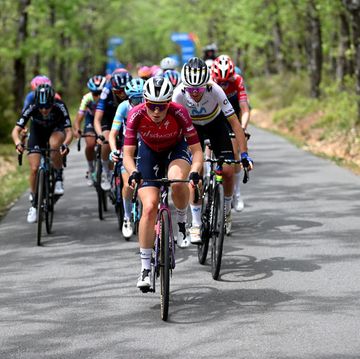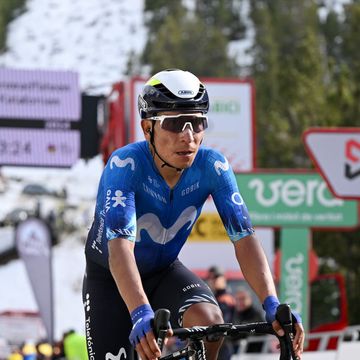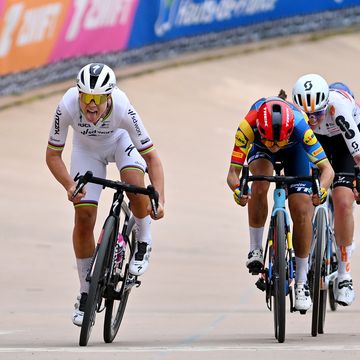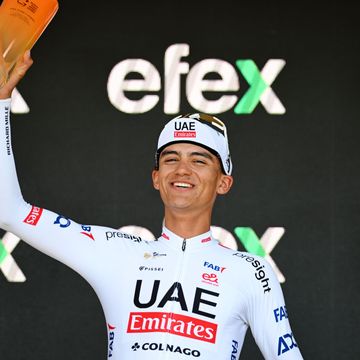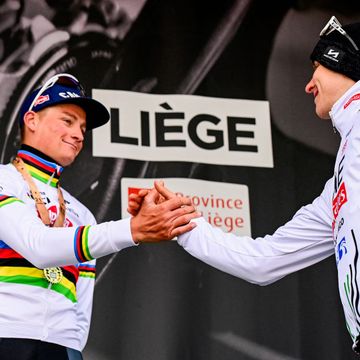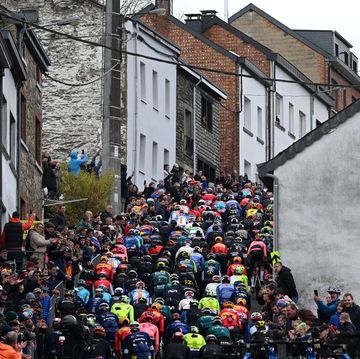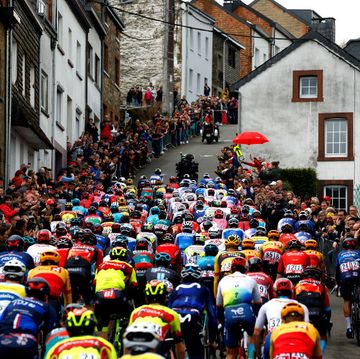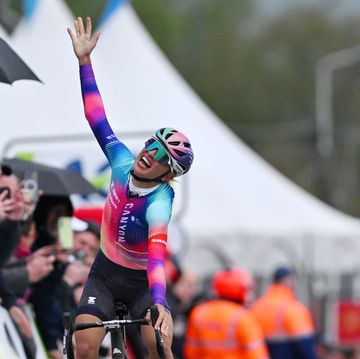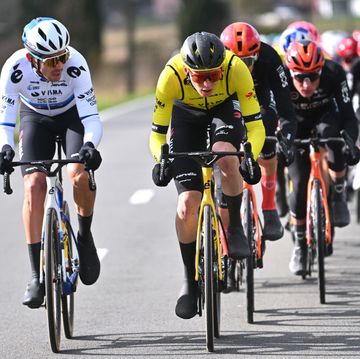Known for bad weather, hills, and cobblestones, the spring Classics are some of the oldest, most legendary, and most prestigious races in professional cycling. Here’s a run-down of everything you need to know about this year’s spring Classics.
It All Begins with La Classicissima
As is tradition, the spring Classics begin with Italy’s Milan-San Remo, the longest one-day race on the calendar. At nearly 180 miles in length, “La Classicissima” receives special permission from cycling’s governing body, the UCI, just to maintain its traditional distance. Predominantly flat until a series of short, sharp climbs in the final hour of racing, Milan-San Remo is often won by a rider who can handle the distance, respond to attacks on the climbs, and still have enough power left to win a sprint against a select group of riders at the finish line. Last year’s edition was won by Germany’s John Degenkolb, a rider whose characteristics are well-suited for the Italian Monument.
RELATED: How to Ride Cobbles and Rough Roads
Degenkolb’s Out; Kristoff’s Hot
Degenkolb outsprinted the 2014 defending champion, Alexander Kristoff of Team Katusha, to win last year’s Milan-San Remo and then won Paris-Roubaix three weeks later. Unfortunately, he won’t be back to defend his titles at either race this year, as the German and five of his Giant-Alpecin teammates were hit head-on by a car during a training ride in Spain this past January. His injuries weren’t life-threatening, but still enough to keep him out of this year’s Classics. Kristoff, who followed his 2014 victory in Milan-San Remo by winning last year’s Tour of Flanders, will be back and looks ready to dominate yet again. The Norwegian has already won five races so far this season for Team Katusha, and will be a tough competitor from Milan-San Remo all the way through Paris-Roubaix.
Goodbye, Spartacus
The biggest story of this year’s spring Classics has to be Fabian Cancellara’s upcoming retirement. The most dominant spring Classics star of his generation, Cancellara has won Milan-San Remo once and the Tour of Flanders and Paris-Roubaix three times each, with a total of 19 top-10 finishes in these spring “Monuments.” Cancellara looks like he’s prepared to go out with a bang: He’s already won four races, including his third victory in the increasingly prestigious Strade Bianche, an Italian semi-Classic raced over Tuscany’s famous white gravel roads. Another Tour of Flanders victory would make the Swiss star the winningest rider in the event’s 100-plus-year history, while a fourth Roubaix victory would tie him with Belgians Tom Boonen and Roger De Vlaeminck for the most wins in the Hell of the North. If he stays healthy and avoids the crashes that have derailed some of his previous spring campaigns, don’t be surprised if Cancellara wins both.
The Best Race You’ve Never Heard Of
One of the spring’s best and most under-appreciated races is Belgium’s E3 Harelbeke, a semi-Classic that has proven to be an ideal dress rehearsal for the Tour of Flanders. Taking place on the Friday 10 days before the Ronde, the E3 is shorter (206km, about 128mi) but covers 15 of the short, often-cobbled climbs which Flanders is famous for. Geraint Thomas and Peter Sagan have won the last two editions, while veterans like Cancellara and Boonen have often won the race before scoring bigger victories in Flanders and Roubaix later.
And Speaking of Boonen...
Since tying the records for the most wins in the Tour of Flanders (three) and Paris-Roubaix (four) in 2012, Belgian superstar Tom Boonen has failed to make either record his own. Crashes and illnesses have proven to be Boonen’s biggest nemesis, but after almost 15 years of Classics greatness, it’s clear that the 35-year-old is approaching the twilight of his career. While Flanders and its 18 “bergs” might be better suited to Boonen’s younger and more explosive teammates Zdenek Stybar and Niki Terpstra, Roubaix is a race that riders have proven able to win well into their late-30s. If Boonen makes it through Milan-San Remo and the Flemish Classics unscathed, he’ll certainly be a top favorite to win what would be his fifth and record-breaking cobbled trophy.
Is There a Curse of the Rainbow Jersey?
If you ask Great Britain’s Lizzie Armitstead, who opened her first season as world champion with back-to-back wins in the women’s Omloop Het Nieuwsblad and Strade Bianche, there’s no such thing as the “Curse of the Rainbow Jersey.” As for men’s champion Peter Sagan, the answer’s not so simple. Sagan has scored eight top-10 finishes in only 11 days of racing (not including the two team time-trials his team raced)—but no victories. A world championship was expected to push Sagan’s career to new heights, but it remains to be seen if he has what it takes to win races as challenging as the spring Classics.
RELATED: Get Your Bike Clean for Spring
Disc Brakes
The UCI has spoken: Disc brakes are now legal in professional road races. But despite the rule change, discs have been slow to catch on in the pro ranks, where tradition often trumps new technology. That could change during the cobbled Classics, races where bad weather and bad roads could combine to make discs an attractive option. Lampre-Merida has already announced it’s using disc brakes throughout the cobbled Classics, and several other teams have been testing them. A muddy Paris-Roubaix might be just the incentive teams need to embrace the new technology.
Changes in the Ardennes
While somewhat less dramatic than their cobbled counterparts, the hillier Ardennes Classics are certainly no less challenging. This year sees changes to both Flèche Wallonne and Liège-Bastogne-Liège, with course adjustments that the organizers hope will encourage more aggressive tactics in the final hour of racing. Sunday’s Liège-Bastogne-Liège gets the biggest addition: the short, cobbled Rue Naniot, which has been added between what was previously the final categorized climb of the race (the Côte de Saint-Nicholas) and the uncategorized climb to the finish line in the Liège suburb of Ans. The new climb should reduce what’s left of a tired peloton before the climb, adding another degree of difficulty to the oldest one-day race on the calendar. Look for riders like Movistar’s Alejandro Valverde (who won both races last year), Etixx—Quick-Step’s Dan Martin, and Team Sky’s Michal Kwiatkowski to be the major protagonists.


